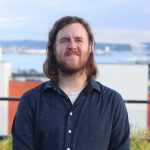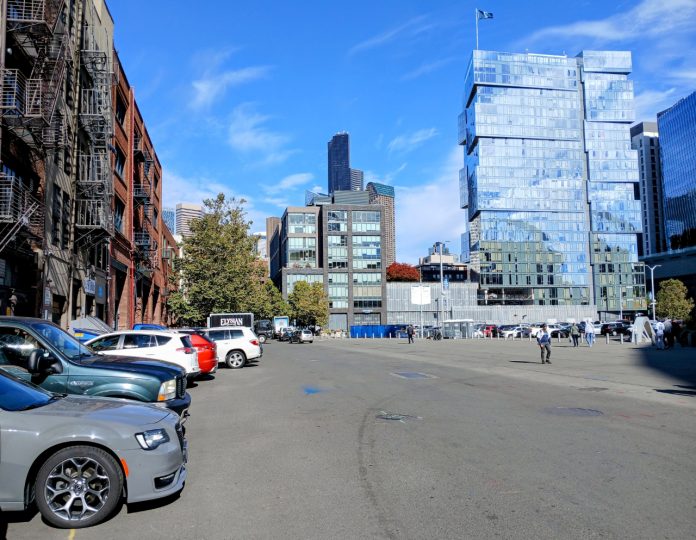
The Seattle Department of Transportation (SDOT) is advancing plans for quick-build public realm improvements along Occidental Avenue S, an underutilized and overbuilt street at the front door of South Downtown’s two sports stadiums. The Occidental Promenade is the first major project to move forward under the newly created People Streets and Public Spaces program, funded via the 2024 Seattle Transportation Levy.
Set to be implemented before the 2026 FIFA World Cup takes over Lumen Field next June, the near-term changes could also inform and influence permanent changes to the street — long a goal of stadium advocacy organizations and Pioneer Square business groups. In fact, the project was specifically added to the eight-year levy with a $6 million earmark, after lobbying from SoDo power players including Seahawks chief operating officer David Young.
Included in a decade-old Stadium District study that outlined ways to improve the vicinity of city’s biggest sports venues, the Occidental project was officially rebooted in 2024 by the Seattle Parks Foundation and the Alliance for Pioneer Square using private funding.
Initial “stakeholder workshops” included representatives of all of the major groups with an interest in the area. Among the participants were the Washington State Public Stadium Authority and First & Goal, which operates the Seahawks, but no members of the general public. That likely resulted in a much more narrow range of options for the street’s future than many Seattle residents would like to see.
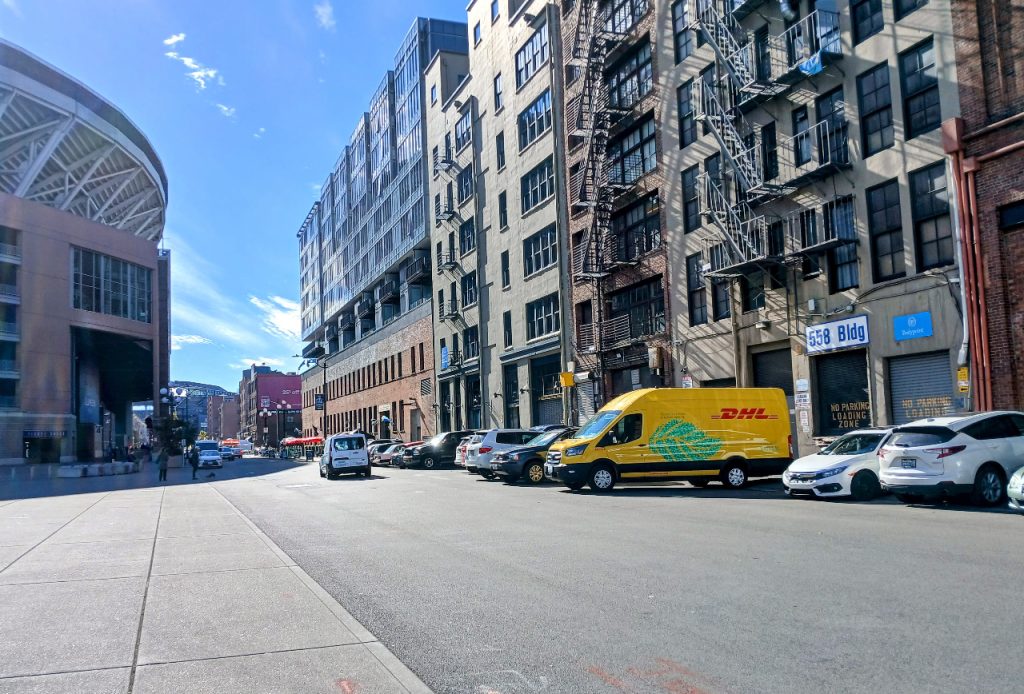
As the first People Streets and Public Spaces project to move forward, Occidental will likely set the tone for street activation projects across the city, adding to its importance. So far, it looks like changes envisioned for the street will be very incremental, as opposed to bold and transformational.
“To balance the needs of users for event days and non-event days on Occidental Avenue, amenities and facilities should allow for optimum flexibility,” a stakeholder workshop summary released last December by consultant MIG states.
Fully pedestrianizing Occidental does not appear to be on the table. Pedestrian advocates like Seattle Neighborhood Greenways have pushed the City to embrace pedestrianization projects, campaigning in particular for Pike Place, Lake Washington Boulevard, and Capitol Hill “superblock” on Pike and Pine streets as low-hanging fruit. Eating up limited “People Streets” funding on incremental projects of a more cosmetic nature could garner pushback.
“While seating and gathering spaces or meet-up areas are necessary, consider how these areas are managed and how they function for events and non-event days,” the workshop summary continues. “Not only are the users of Occidental Avenue diverse with varying interests, the type of event (e.g. concert or game), how they use, and access Occidental varies by time of day. For example, while street vendors might only operate during event hours, event producers and suppliers for local businesses may only need the early morning hours to have unobstructed access to loading docks and alleys.”
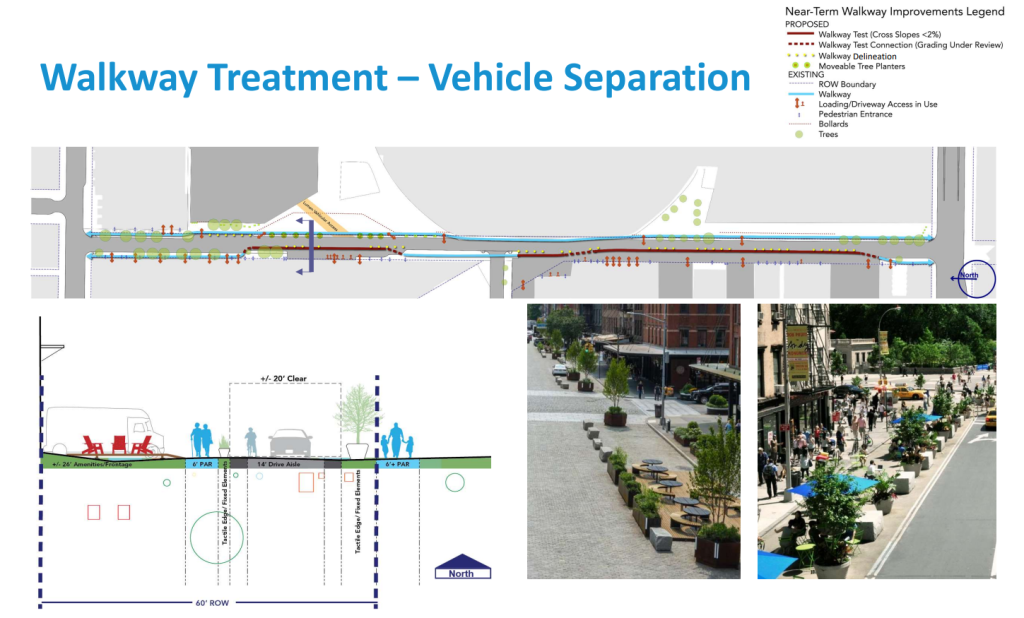
Initial concepts for “tactical urbanism” treatments — quickly implemented changes that would also be easy to remove — were presented last week to the Pioneer Square Preservation Board, which has jurisdiction over changes along most of the street segments being eyed. They include ideas to activate specific “nodes” along Occidental with movable tree planters, chairs and tables, and barricades.
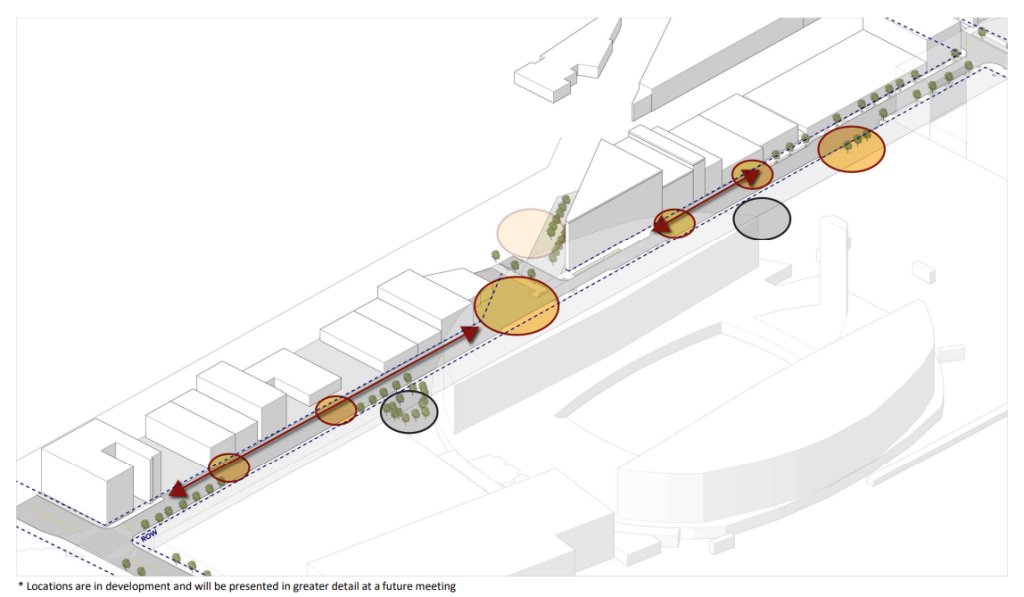
SDOT is also proposing to create a delineated walkway along the west side of the street, where no sidewalk exists right now. But the concepts shown to the preservation board look to preserve the parking along that side of the street as well, with a “walkway test” implemented between the parked cars and the roadway.
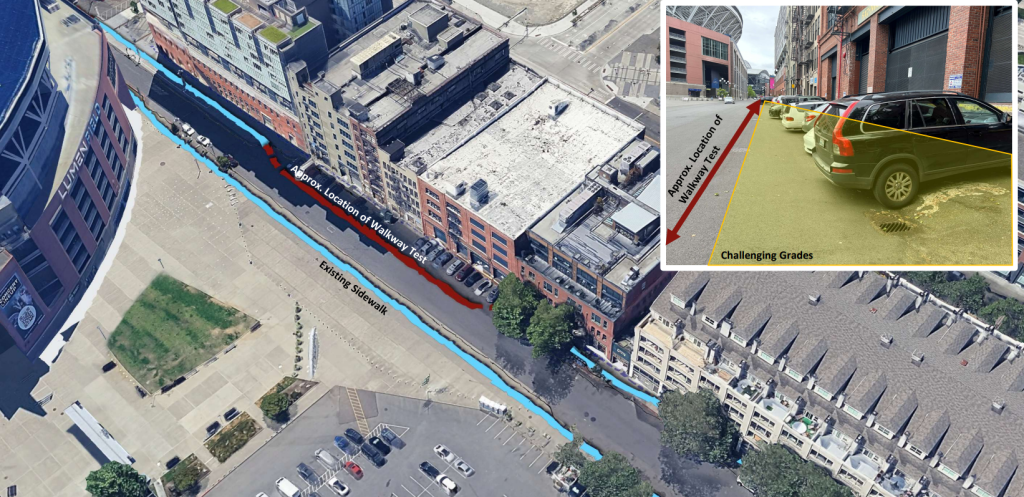
One clear impetus behind this project, at least from many of the official stakeholders, is a desire to change how the street vendors along Occidental Avenue are managed. John Marchione, the executive director of the Washington State Public Stadium Authority, described the current setup as looking like a “flea market,” per notes from a May 2024 meeting. Surveys collected by MIG from the stakeholder group on top priorities produced vendor management as a major theme, with a nearby Crossfit gym owner wanting to see “vendors moving to a better space that opens [more] parking.”
Cracking down on illegal vending has been a priority for the Harrell Administration citywide, with $2.7 million earmarked for SDOT to ramp up street use inspections to address illegal vending “particularly near venues and busy spots during evenings and weekends,” according to the draft budget released last month.
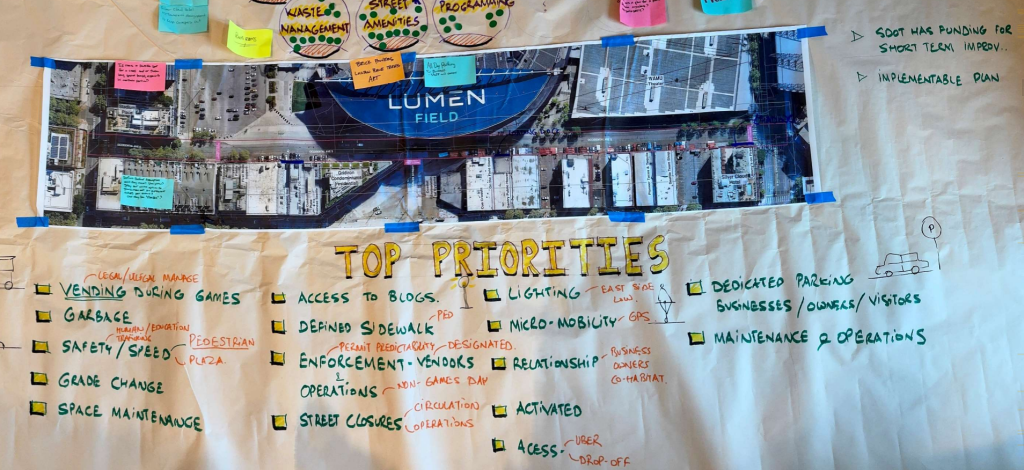
When the Seattle City Council approved the brand new Seattle Transportation Plan last year, it included an entire chapter on People Streets and Public Spaces, envisioning neighborhood studies looking at public realm upgrades across the entire city with a special focus on transit hubs. But the plan’s primary funding source, the transportation levy, only includes $39 million to spread around all neighborhoods for those projects, with levy commitments to build eight people streets and to make eight public space investments. Occidental Avenue is now at the head of the line.
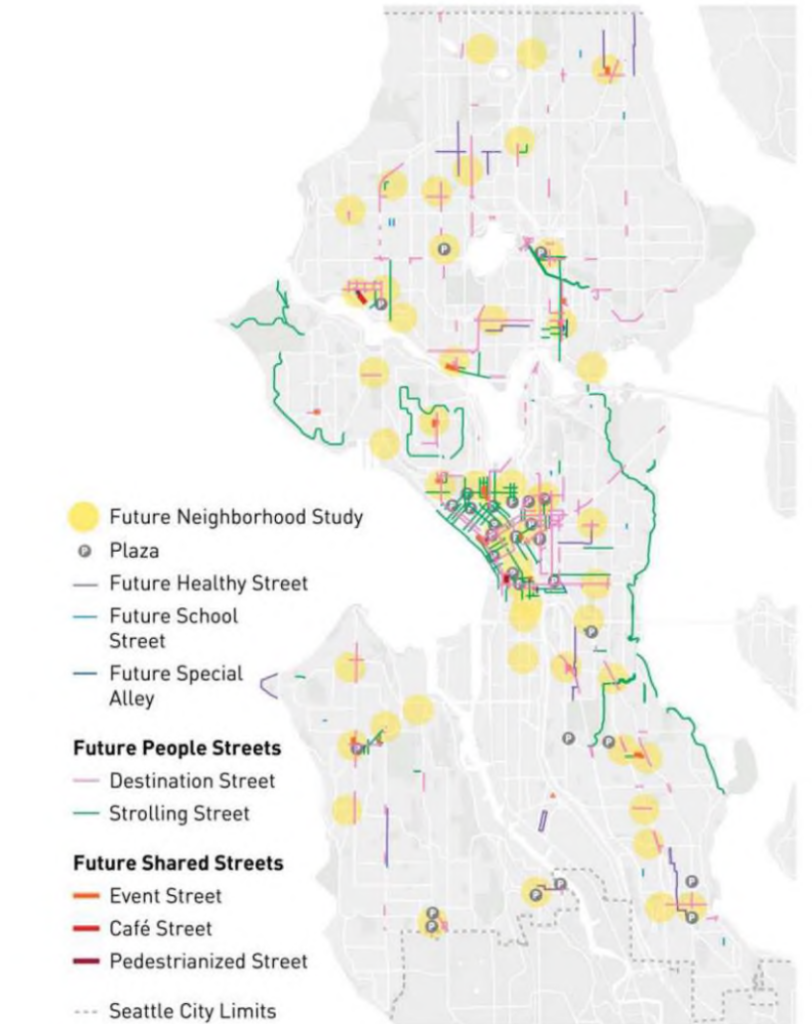
The full cost of the Occidental project is almost certain to exceed the amount available in the transportation levy, especially when considering the long-term goal of making the improvements permanent. An internal memo at SDOT dated early last year cited a $30 million cost to create a festival street along Occidental, based on a cost comparison to recent projects along Pike and Pike Street and between the waterfront and Pioneer Square.
“This is going to be an iterative process. There’s near-term improvements. A lot of what we’re going to be bringing to you next time is testing for a long term improvement,” Alliance for Pioneer Square Executive Director Lisa Howard told the preservation board, which expressed its support for the project. “So just keep in mind that we’re going to bring you along the way, but this is also going to be a long-term project. There’s redevelopment opportunities along the sidewalk that are going to be outside of the scope of the project. There’s integration of other large projects like WOSCA and the plaza, and contextually we think we’re headed down the right path.”
After the stakeholders give their final buy-in at this stage — expected by the end of the month — that’s when public engagement starts. How much influence members of the public will actually be able to have remains to be seen.
Ryan Packer has been writing for The Urbanist since 2015, and currently reports full-time as Contributing Editor. Their beats are transportation, land use, public space, traffic safety, and obscure community meetings. Packer has also reported for other regional outlets including BikePortland, Seattle Met, and PubliCola. They live in the Capitol Hill neighborhood of Seattle.

